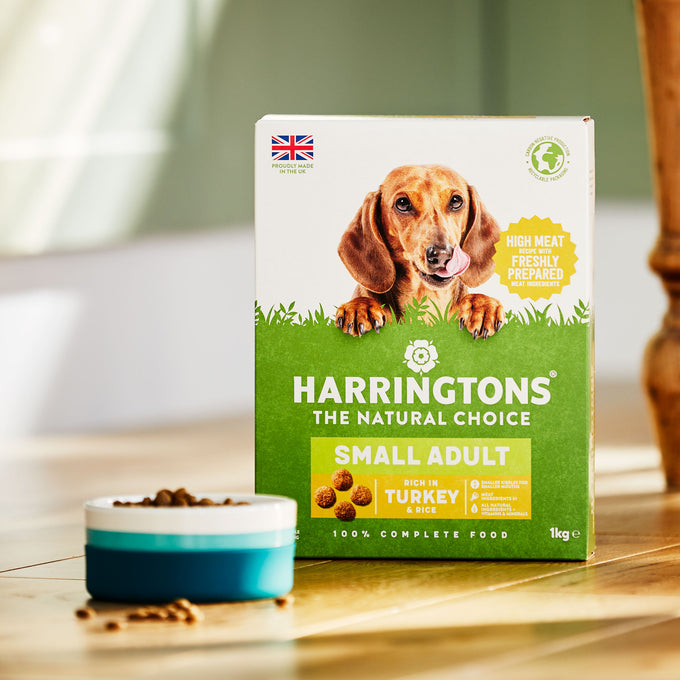As exciting as it is, welcoming a new puppy into the family is a huge commitment. The journey into doggy adulthood can come with a few challenges — some of them financial. It can be costly if you don’t make the right preparations.
Welcoming a new dog into your life — along with all those tummy rubs and snuggles — can be exciting, but just paws for thought. Being aware of potentially unexpected costs can save worry (and surprise expenditure) further down the line. Make sure to check out our five top tips for budgeting — including costs to expect — for your new four-legged friend to keep them happy and healthy.
-
Work out your initial costs
When a canine companion arrives into your life, expect a few upfront costs for all those essentials.
- Bed
- Food and water bowls
- Dog toys
- Lead, collar and ID tags
- Toothbrush and toothpaste
- Brush
- Stain removers
- Car harness
- Dog crate (increasing in popularity as a safe, secure ‘den’)
- Initial courses of jabs and vaccinations (including hepatitis, parvovirus, leptospirosis, canine distemper)
- Monthly worming until six months old
- Spaying/neutering
To ensure you’re completely covered, you should set aside at least £400 as a ballpark figure — but this is only an estimate. Particularly when it comes to neutering, a number of factors can affect these costs, including your puppy’s breed, gender and weight.
Bear in mind that you won’t have to pay for your pup to be microchipped; by law, this is now handled by the breeder before eight weeks of age.
The calculations above also don’t doesn’t include the adoption fees, which usually start from £50 from a reputable breeder, rising up to £1000 for rare breeds. Some rehoming trusts vaccinate their dogs, as well as neutering them if they’re old enough, meaning upfront costs can vary.
-
Calculate and budget your ongoing monthly doggy spend
Much like owning a house, your new puppy comes with a series of regular expenses which you should budget for. The bigger the house (or dog!), the more it will typically cost per month.
For most owners, you’ll need to budget for a monthly spend between £50 and £80, with smaller dogs coming in cheaper than large dog breeds — pooches of a more modest size typically eat less and cost less to insure.
Things you’ll be forking out for on a regular basis include…
- Food
- Pet insurance payments
- Regular worm and flea treatment
- Occasional boosters and health checks
- Toothpaste
- Poo bags
A good insurance policy is crucial: these monthly estimates don’t include emergency vet treatments or expenses.
Sadly, leads, collars and beds don’t last forever, so it’s also worth factoring in some extra cash to replace the items you purchased earlier on. It can also be hard to resist those spontaneous small toy purchases, so budget in some extra money if you’re feeling generous.

-
Choose a pet food subscription
Food is the biggest monthly expense that comes with owning a dog. So, to help with budgeting, researching savings and deals can really bring costs down.
Opting for a subscription box for your dog allows you to make time and cost savings. You won’t have to worry about picking food up, or supplies running low — and you’ll also be able to make exclusive cash savings.
With a Harringtons pet food subscription box, for example, you’ll be able to benefit from an exclusive 5% discount on every order, as well as enjoying free delivery in England and Wales.
Building your subscription is a fully customisable and flexible process — you’re able to choose from the full Harringtons range, set how often your subscription recurs, as well as make changes at any time. Over time, these savings can certainly add up.
-
Take out a top-notch insurance policy
Sadly, it’s not always plain sailing — life can throw up unexpected surprises which drastically affect the health of our beloved furry friends. Paying for your dog if it falls ill or has an accident is by far the biggest one-off expense an owner is likely to encounter, so make sure you’re on the ball here.
There are a number of types of pet insurance, including lifetime, non-lifetime and accident only — make sure to research and invest in a quality policy that covers and protects you from any unmanageably hefty vet bills.
Needless to say, scrutinise the small print in those terms and conditions. Some policies may expire when your dog reaches a certain age, or might not cover those with certain medical conditions.
-
Research your vets
It’s pretty tempting to go to the closest one possible, but we’d suggest doing a bit of digging to seek out the most acclaimed vets in your area; word-of-mouth can also be pretty compelling, and your ‘prime’ location vet might not offer the best value for money or care.
A quality veterinary practice will help you to keep on top of vaccinations, parasites and fleas, as well as identifying any potential health problems. A happy, healthy pooch certainly helps with budget management further down the line.

Budgeting for a puppy: a walk(ies) in the park
If you’re a new owner, having a handle on the financial side of things can seem daunting. But with the right preparation, there’s no cost that you won’t be expecting.
Now the financial side is locked down, we can focus on all of the excitement, enjoyment and happiness that our canine companions bring to our lives. Bring on the treats, we say!

